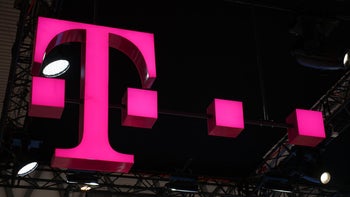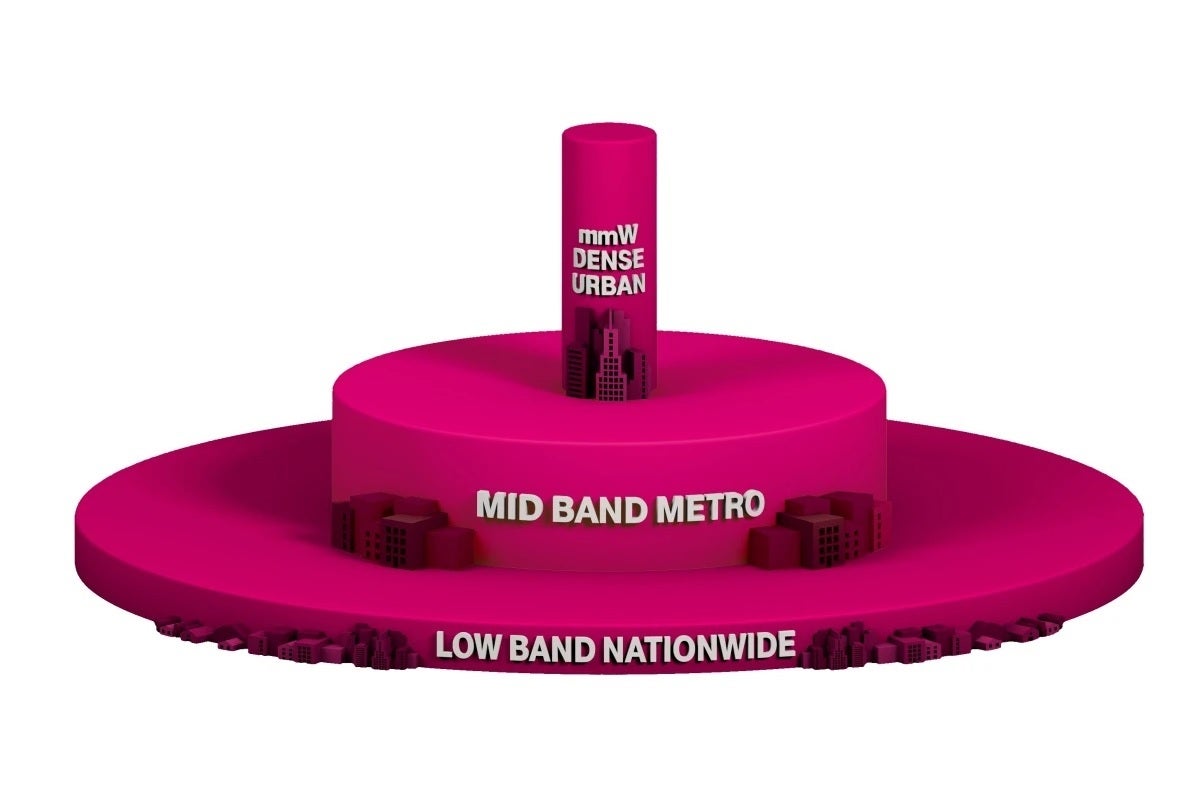The spectrum that could make T-Mobile the U.S. 5G speed leader has been added to 81 more markets

Earlier this year, T-Mobile finally merged with Sprint as the $26.5 billion deal first announced in late April 2018 closed.T-Mobile managed to do the impossible, getting regulatory approval from both the FCC and DOJ. Rumors of a combination of the two carriers had been around for many years. Back in 2014 when Sprint was the nation's third-largest carrier and T-Mobile fourth, there were discussions about a merger that was designed to make the combined company a larger threat to Verizon and AT&T. The agencies refused to look into such a deal and it was DOA.
T-Mobile continues to build out its 2.5GHz mid-band 5G network
Four years later, the wireless landscape had changed dramatically. T-Mobile became the fastest growing wireless provider in the states and was bigger than Sprint. And no longer was size the main reason to pursue the deal; it was now all about 5G. In April 2017, T-Mobile spent $7.9 billion to purchase 31MHz of low-band 600MHz spectrum and while these airwaves would bolster T-Mobile's 4G LTE signals and quadruple its low-band holdings, it also gave the up and coming firm three times the amount of low-band spectrum per customer than Verizon owned.

T-Mobile's 5G layer cake build out could make it the speed leader in the states
T-Mobile started to build a 5G game plan that even Sara Lee would have liked. The low-band 600MHz spectrum would provide a base from which T-Mobile would create a triple layer cake of 5G service. The bottom layer would consist of the 600MHz spectrum that travels farther and penetrates structures better. The one drawback is that data speed would be slower. So while the T-Mobile executives could see the possibility of it launching the first nationwide 5G network, it also wanted to solve the speed issue by adding mid-range spectrum. Even though such airwaves are hard to find in the states, it turned out that Sprint had a hoard of 2.5GHz airwaves which became the impetus to get the merger done. T-Mobile would use its low-band signals to give its 5G network a nationwide footprint. The 2.5GHz mid-band spectrum would surface in rural areas and help raise download data speeds. The extremely fast but short-distanced mmWave signals would be used in urban markets.
T-Mobile says that in a few years its 5G data speeds will be up to eight times faster than its LTE speeds and that will increase to 15 times faster within six years. And today T-Mobile announced that it is heading in the right direction by stating that its 5G mid-band signals are now available in 81 more cities and towns in the U.S. The mid-band 5G airwaves are delivering peak 5G download data speed as fast as 1Gbps with the average speed at 300Mbps. That is 7.5 times the carrier's average LTE data speeds.
Neville Ray, President of Technology at T-Mobile, said today, "T-Mobile has the competition in the rear-view mirror on 5G, and they’re only getting farther behind. While the other guys are playing catch-up, we’ve had nationwide 5G since last year, and we’re now adding faster speeds across the country with mid-band 5G. This is our 5G strategy in action. Mid-band is the 5G spectrum, and T-Mobile has more of it than anyone. We have nearly twice as much low and mid-band spectrum as AT&T and nearly triple that of Verizon. And that means T-Mobile is the only one capable of making the world’s best 5G network a reality."
Back in May, T-Mobile opened the 5G layer cake in New York City for the Samsung Galaxy S20+ and Samsung Galaxy S20 Ultra 5G. Wall Street analysts see the wisdom in the 5G layer cake build out as several forecast that T-Mobile will become the King of 5G in the U.S. Not bad for a carrier that was fourth out of four major U.S. carriers, jumped to third in August 2015, and now trails only Verizon in the states.










Things that are NOT allowed: